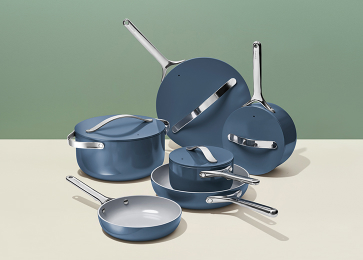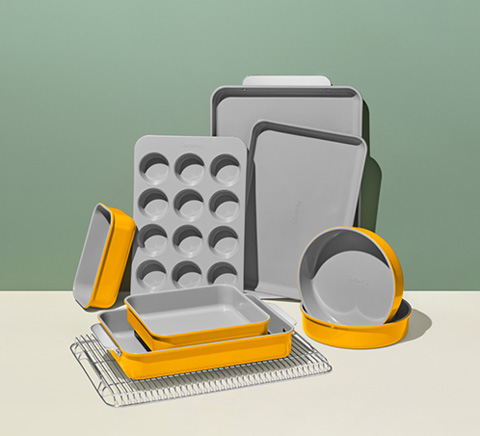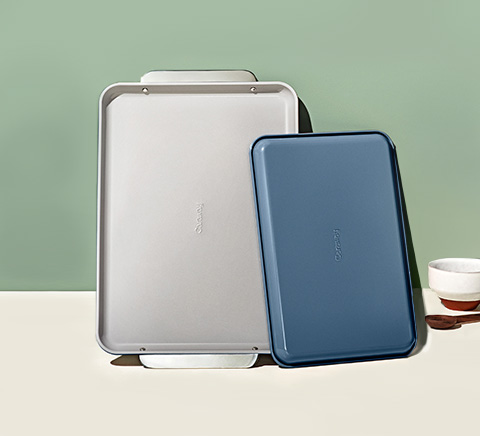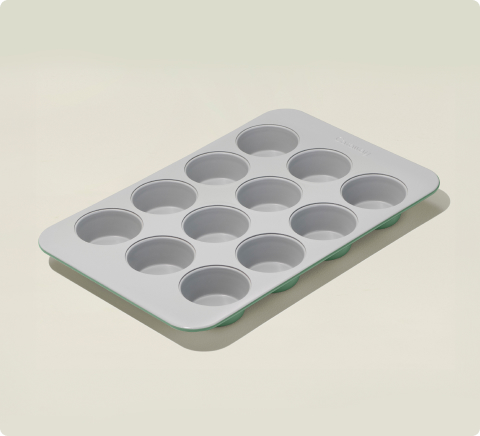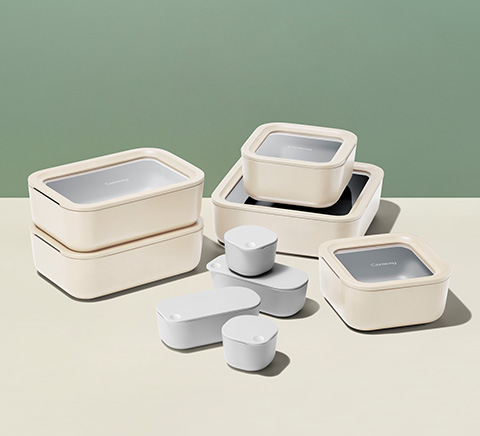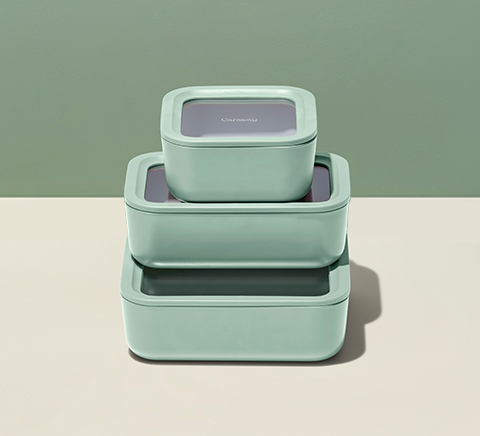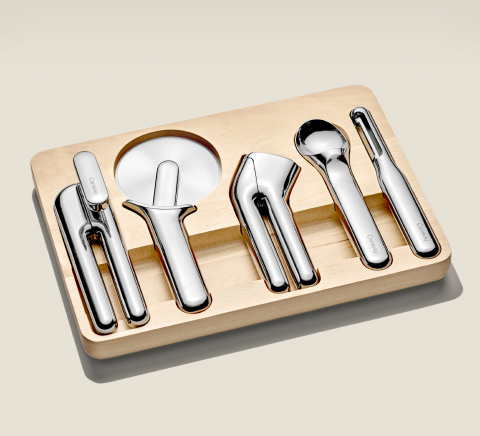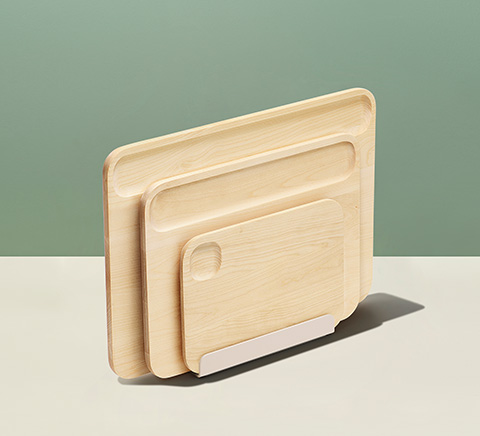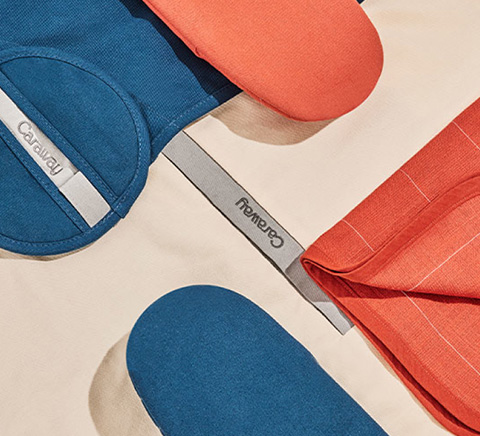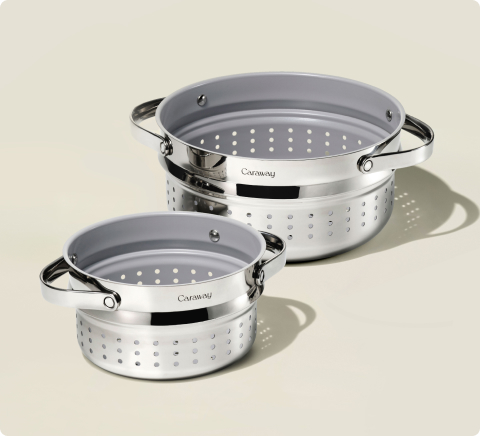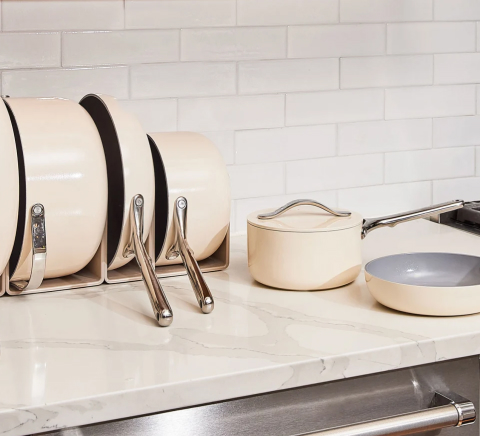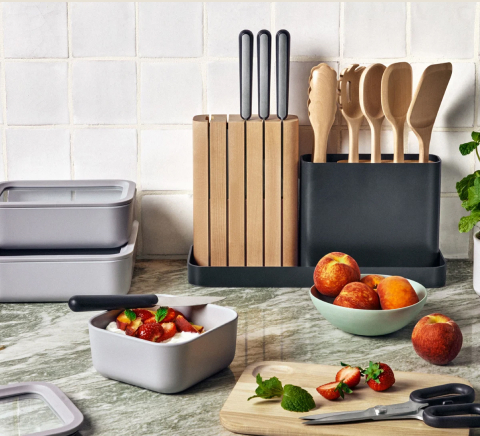At Caraway, we believe in crafting kitchen essentials that elevate your cooking and ensure it's done in the healthiest way possible. That's why we're diving into the world of cast iron, a beloved staple in kitchens worldwide.
Cast iron cookware holds a cherished spot on the stove and in the hearts of those who use it, thanks to its unparalleled ability to enhance the flavors and textures of our favorite dishes. However, to truly harness the potential of cast iron, understanding the art of seasoning is key.
Let's explore how a simple process can transform your cooking experience, ensuring your cast iron becomes a legacy item in your culinary collection.
What Is Cast Iron?
Cast iron is much more than just another metal. It's a piece of culinary heritage. Cast iron cookware is made from a unique alloy that retains and distributes heat exceptionally, making it ideal for everything from searing steaks to baking cornbread. Its durability means that, with proper care, it can last for generations.
The distinctive feature of cast iron is its raw, porous surface that, when seasoned, becomes a naturally non-stick cooking surface. This characteristic allows it to stand out in the kitchen, providing a versatile foundation for both high-heat cooking and slow simmering.
Why Is Seasoning Your Cast Iron Important?
Seasoning is the key to unlocking the magic of traditional cast iron. The process involves coating the pan with a thin layer of oil and heating it to a point where the oil transforms into a protective polymer layer---this is known as polymerization. This layer not only gives cast iron its classic black patina but also creates a non-stick surface that improves with use.
Here are the benefits of a well-seasoned cast iron pan:
Enhanced Non-Stick Performance
One of the most significant advantages of seasoning your cast iron is the development of a natural, non-stick coating. This seasoned layer forms when oil baked onto the cast iron polymerizes, creating a slick surface.
This feature allows you to cook with less oil, making your meals healthier and simplifying the cleaning process. Over time, as you continue to cook and re-season the skillet, this non-stick quality improves, turning your cast iron into a preferred tool for everything from frying eggs to crafting the perfect pancake.

Rust Prevention
Seasoning your cast iron does more than just improve its cooking capabilities---it also acts as a barrier against moisture. By maintaining a well-seasoned layer, you protect the iron beneath from exposure to water, which can lead to rust.
This proactive approach not only prolongs the lifespan of your cookware but also ensures that it remains in excellent condition, ready to handle any recipe you throw at it.
Flavor Improvement
A seasoned cast iron pan is like a fine wine --- it gets better with age. Each cooking and seasoning session layers flavors into the pan's surface, contributing to richer, more complex tastes in your food.
This depth of flavor is something that newer pans can't replicate immediately. For those who love to cook, this means each meal prepared in your cast iron carries a hint of the dishes that came before, adding a unique touch to every bite.
Chemical-Free Cooking
In today's world, where health and safety in cooking surfaces are more important than ever, a well-seasoned cast iron pan offers a significant benefit. Unlike many modern non-stick surfaces that can emit harmful fumes when overheated, the natural seasoning on cast iron is completely chemical-free.
This makes it a safer option, particularly at high temperatures, ensuring your cooking environment remains as healthy as the food you prepare.

What Do You Need To Season Cast Iron?
Before you start the seasoning process, gathering the right supplies will set you up for success.
Here's what you'll need:
-
Cast Iron Cookware: Whether it's a new cast iron skillet or an old favorite needing rejuvenation.
-
High Smoke Point Oil: Canola oil, flaxseed oil, or grapeseed oil are ideal due to their ability to withstand high temperatures without smoking excessively.
-
Paper Towel: To apply the oil evenly across the cooking surface.
-
Oven Mitts: Essential for handling hot cookware.
-
Aluminum Foil: Useful for lining the bottom rack of your oven to catch any drips and keep it clean.

Step-by-Step Guide: How To Season Cast Iron
With your materials in hand, it's now time to embark on the seasoning journey. This simple process will transform your cast iron into a highly functional and cherished piece of cookware in your kitchen.
1. Clean Your Cast Iron Cookware
First, clean your cast iron cookware. If it's a new cast iron pan or an unseasoned piece, give it a good scrub with warm water and a scrubber to remove any residues from the factory. If you're looking to re-season your skillet, a gentle wash with mild, soapy water will help strip away old oils and any build-up.
After washing, make sure to dry your cast iron completely using a clean cloth or paper towel. This step is vital as any leftover moisture can lead to rust, which would be counterproductive.
2. Oil the Cookware
Next, it's time to oil the cookware. Coat the entire pan --- inside and out, including the handle --- with a high smoke point oil like canola oil, flaxseed oil, or grapeseed oil. These oils are preferred because they can handle the high heat needed to create a good seasoning without smoking too much.
Use a paper towel to spread a thin layer of oil over every surface of the pan. Be thorough but conservative; you want to wipe off any excess oil with a fresh paper towel. The aim here is a light coat; too much oil can result in a sticky residue after heating.
3. Heat It Up
Now, heat it up. Place your oiled cast iron upside down in an oven preheated to 375°F (190°C). This orientation helps prevent oil from pooling in the bottom of the pan. Place a sheet of aluminum foil below the rack to catch any oil drips.
Allow the cast iron to bake for one hour. This baking period lets the oil polymerize and form a durable layer of seasoning. Once the hour is up, turn off the oven and let the pan cool down inside to handle it safely, or set it aside on a heat-resistant surface if you're using a stovetop method.
4. Repeat if Necessary
Consider a second round. Often, a single seasoning might not be enough to achieve that perfect non-stick surface. Feel free to repeat the oiling and heating steps two or three more times. Each cycle enhances the non-stick quality of your pan and fortifies the protective layer.
5. Store Properly
Store your cast iron properly after seasoning. Once your cast iron has cooled and you're satisfied with the seasoning, store it in a dry place. If you must stack anything on top of it, be sure to place a protective layer between your cast iron and other items to avoid scratching or damaging the new seasoning layer.
Common Mistakes To Avoid When Seasoning Cast Iron
Now that you've learned how to properly season your cast iron cookware, it's important to steer clear of common pitfalls that could undermine your efforts.
Here are a few mistakes to avoid:
Neglecting To Clean New Cast Iron Before Seasoning
Even if a cast iron skillet is brand new, it often comes with a protective coating from the manufacturer, which must be thoroughly removed before the first seasoning. Washing it with hot water and a stiff brush will prepare the surface properly for seasoning.
Over-Seasoning
Applying too much oil can lead to a sticky, uneven surface rather than a smooth, sleek patina. A very thin layer of oil is sufficient for effective seasoning.
Using Excessive Heat
High temperatures might seem like a quick way to season, but they can actually burn off the oil before it polymerizes, leaving the pan poorly seasoned. Stick to the recommended temperature range for best results.
Skipping the Oven During the Initial Seasoning
Some might attempt to season their pan on the stovetop alone, but this often results in uneven seasoning. Using an oven allows for even heat distribution and a more uniform layer of seasoning across the entire surface of the pan, including the sides and bottom.
Unnecessary Seasoning
Not every cast iron needs regular seasoning. For instance, our Enameled Cast Iron comes with a durable, non-toxic enameled interior that provides a reliable non-stick surface and does not require seasoning.
This cookware simplifies cooking and cleaning, while adding a stylish pop of color to your kitchen. What's not to love?
The Wrap Up
As we wrap up our guide on how to season cast iron in a few simple steps, remember that this enduring method prepares your skillet for a variety of dishes, from a perfectly seared steak to a crisp fried chicken, and enhances its lifetime and performance.
If you're looking for an even simpler solution that skips the seasoning but keeps the cook easy and clean, explore Caraway's line of Enameled Cast Iron. Each piece features a non-toxic, enameled interior that guarantees a non-stick surface and adds vibrant style to any kitchen setup.
Dive into a world where style meets practicality and discover the joys of hassle-free cooking with Caraway's innovative cookware today.
Sources:
Cast iron | Definition, Composition, History, & Facts | Britannica
How to Season a Cast Iron Skillet | Cooking School | Food Network
Cookware Material: Seasoning | Century Life
Cooking Oils and Smoke Points: What to Know and How to Choose the Right Cooking Oil | MasterClass
